Matsumoku Industrial Co., Ltd. was founded in 1951 by Mr. Tsukada, in the city of Matsumoto, Japan, and his name was at the time Matsumoto Mokkou until 1971. Located in Matsumoto, the name of the factory comes indeed from the combination of the words “Matsumoto Mokkou-jo” (carpentry). This company specialized in carpentry and was working in its early days for Singer Japan.
Being one of the best carpentry companies in Japan, Matsumoto Mokkou / Matsumoku will soon have an important role in the history of Japanese guitars. As a subsidiary of Singer Sewing Machine Company, Matsumoto Mokkou’s core business was the manufacture of wooden cabinets, tables and accessories for sewing machines.
In the early 1960s, Matsumoto Mokkou lost competitiveness in foreign markets and Singer Company decided to end their collaboration. But Matsumoto Mokkou was a modern factory with good financial management, a real commercial vision and it had excellent wood drying facilities. All conditions were in place for Matsumoto Mokkou to start making guitars, and in 1962, Fujigen’s founder, Yuichiro Yokouchi, set up a partnership with Matsumoto Mokkou to make electric guitars. This commercial relationship between Fujigen and Matsumoto Mokkou, both based in Matsumoto, will last for a few years.
In 1965, Matsumoto Mokkou started making guitars for various brands like Arai, Colombia and Victor. Matsumoto Mokkou also started making his own guitars for export.
Matsumoto Mokkou has employed excellent engineers, designers and craftsmen. One of them was Norikatsu Harayama, chief engineer in the 1960s. He was a master craftsman also known for having been responsible for producing guitar bodies and necks for the ESP, Kramer, Schecter and Moon brands. Mr. Harayama also made and distributed guitar necks under his own brand called Jaramer. Another key Matsumoto Mokkou / Matsumoku employee was Mr. Hayashi Nobuaki. At first, he was hired as a guitar designer. He learned the art of carpentry with Harayama and he was the one who projected most of Matsumoto Mokkou / Matsumoku’s electric guitars in the 60s and 70s.
Matsumoku was responsible for production in the ’70s and’ 80s for many brands of electric guitars such as Aria, Electra, Epiphone, Fantom, Greco, Ibanez, Skylark, Vantage, Washburn, Westone and Univox. The factory closed in 1987 and was demolished a few years later. A park now exists on these sites and a marble sculpture in the shape of a guitar marks the place where the entrance of the factory stood (see picture below).
Some important dates in the history of Matsumoto Mokkou / Matsumoku:
- 1964 – The production of electric guitars is increasing, especially for the Arai Trading brand of Mr. Shiro Arai.
- 1966 – Matsumoto Mokkou produces more semi-acoustic models to satisfy the market. This is the case for Arai guitars (which will take the name of Arai Diamond because Kawai owned the rights to the Arai brand) and Greco guitars.
- 1970 – Kanda Shokai entrusts Matsumoto Mokkou with the production of his copies of Gibson Les Paul, the Greco EG series. The Japanese youth want to own the same guitars as their idols.
- 1971 – The factory’s name Matsumoto Mokkou was changed to Matsumoku Industrial Co., Ltd.
- 1975 – Matsumoku started production of Aria Pro II guitars. Two companies, Aria Pro II (Arai Trading) and Greco (Kanda Shokai) dominated the market of electric guitars in Japan. Kanda Shokai also launched the Westone Folk Guitars and a more affordable electric guitar brand named Westminster.

- 1977 – The Aria Pro II PE 1500 comes on the market and this model is quickly recognized as an exceptional guitar. Its classic and modern design as well as the quality of manufacturing have made it a rather expensive model for the time. Aria Pro II has therefore decided to extend the series with cheaper models by putting the PE 1000, PE 800 and PE 600 on the market.
- At that time, other Japanese brands started the production of original guitars. Indeed, the trial known as Gibson against Ibanez had encouraged these brands to reduce or even abandon the production of copies.
- 1980 – Japanese guitar brands are increasing the production of copies of American brands. Aria Pro II, to face the competition of Tokai, Greco, Fernandes and Yamaha for example, makes excellent copies by Matsumoku. Most of these copies are equipped with DiMarzio pickups.
- That same year, Matsumoku develops the range of Westone brand which offers original designs. Most of these Westone guitars are also equipped with DiMarzio pickups.

- 1986 – Matsumoku is making a massive investment in machinery in an attempt to optimize the production of musical instruments. The money comes largely from the sale of part of its premises and the massive reduction of manpower.
- 1987 – Despite its attempts to survive the market and to pay a debt of more than 1 billion yen, the legendary Matsumoku factory closed its doors in February 1987.
Some Japanese brands for which Matsumoku made guitars:
Conrad, Univox, Ventura, Lyle, Shaftesbury, Westbury, Epiphone, Greco, Electra, Vantage, Vox, Hondo II, Skylark, Crestwood, Alvarez Yairi, ELK, Aria, Aria Diamond, Aria Pro II, Westminster, Azusa, Fantom, Frister, Pearl, Franpton, Fernandes, etc. There are more than 30 brands for which Matsumoku made guitars!
With regard to the brands intended for export, we can mention St. Louis music, Westbury, FCN, Mayer, ENGRO, Active Music and others.


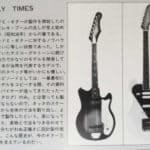
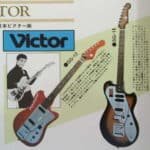








































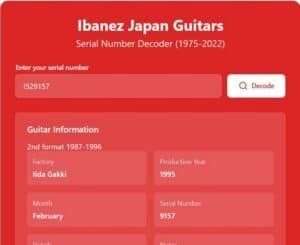
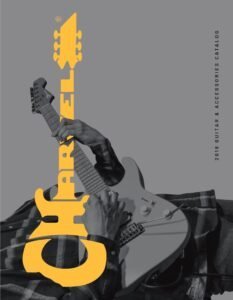

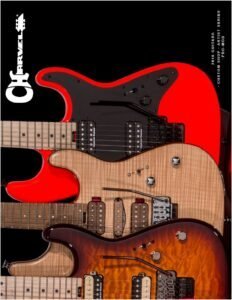
22 Responses
The name matsumokugakki is incorrect.
It ’s matsumoto mokkou.
It was abbreviated later and became Matsumoku Corporation.
Thanks for your input garakutaguitar. The article was imprecise indeed. I really appreciate your website and all the information you provide.
I did not see a spot to write my own comments please move it if you can
When I was 12 I got a Castilla V14 over the years as I learn I mad small change string height and tuners I put Ibanez Star tuners on it in 1976 and I play or it was in my case.
Just a few months ago I had to fine out why they put the name on a metal stick-on name plate so I removed it, no damage to it and the Ventura name was there, I was surprised
I keep the name plate in the case and I kept the original tuners. I had read and seen these guitars with different labels inside with Bruno’s name on it.
Has anyone else found a different name on this or a different guitar. I can post picks
I did not see how. It still looks great after 51 years. I wished I had kept many guitars I sold over the years. I had 2 lawsuit guitars in 1976 both Ibanez LP black and gold and a Destroyer
The Dan Armstrong was cool but its not a player
This same guitar is a V-42 Ventura Some other that used this same guitar use the V-14
If anyone has a copy of the Ventura label from the inside I would like to keep it in the case
I am seeking information on a Crestwood vintage violin bass, semi-hollow, short scale (30 inch). I had thought it was made by Matsumoto, but I don’t find it mentioned here.
Hi there! I bought a Givtone electric guitar and i was looking for some information about brand and guitar models. It’s said that its a Teisco guitar, but I’m not convinced. There must be more.
Please let me know if you can help me to find more information. I think my old guitar is a piece of jewellery.
Thank you very much!!
Sorry, I don’t have any info about this brand.
Any information on the Skylarks? There is an older website that has some details on those, but the site appears to no longer be updated.
Hello Jesse, have you checked the Japanese blog garakutaguitar.com ? I’m not sure but maybe it has some information. You can use Chrome to enable the google translation of the pages.
anyone with info on Westminster LP model with set-neck(not bolt) that had a very traditional logo and a sort of diamond shaped inlay mother of pearl on the headstock that had a Gibs(o)n style book headstock shape? I cannot find pics or references to it online surprisingly. I have been looking occasionally for info on this guitar for the last 12 years. I ask because all sources i have seen say they never made a set neck version…only bolt-on types. Obviously that isn’t the case since I have one. It’s a nice copy of a jimmy page style cherry burst. Not what I had been looking for but a pleasant acquisition.
any info would be great?? scans of catalogs?
thanks for any help!
harmon dot jon at gmail dot com.
Waw, such a nice info, also the one with the intwrview with Mr. Yamato. I always loved Japanese stuff as it was always something when spirit made technology. Above USA made stuff as well, tho elitists witll disagree probably. Also the feeling of honor, pride, craft in Japanese instruments is so great. Love my Ibanezses from Fujigen from 90s, but now I have a bass from Matsumoto on the way from one guy… Yeah, it kis a copy of one USA product, but I am much happier it is made in Japan.
Hi I have a Cherry burst , Sanox Sound Creator Les Paul “look a like “ the guitar seems very well made and I would be really interested in finding out more about its origins and about when and where it was made . Many thanks Sean
Hi! Thanks for the excellent article! Can you tell me more about Frister? What years did they work with Matsumoku?
Hello all.
I found an 1982 guitar in my parents house.
It is called Shiro Sprinter and it is a copy of a Stratocaster.
I don´t know anything about the quality of woods, etc…
Thanks in advance for any information.
Best regards
Any info (materials used) on the 70’s era Aria GL650 acoustic (Guild D-55 copy) . I’d appreciate it.
Thanks.
I find it amazing that Lyle brand guitars were left out. Matsumoku made thousands of Lyle brand acoustic and electric guitars for a long period in the 1960s, 1970s and early 1980s, thanks to an association with Lyle. D. Heater Music company in Portland, Oregon. A few were patent infringement copies which caused legal actions, but many were original solid body and archtop electrics, along with a host of acoustic guitars, that were all very well made, played very well and looked great. Some designed by Nobuaki Hayashi (H. Noble) of Japan.
Personally, I have owned several Lyle electric guitars, my favorites being an ES335 type 12 string electric in dark burgundy color, with black appointments and the Anniversary Lyle ES335 type with wiggle bar tailpiece in red sunburst and Mother-of-Toilet-Seat headstock overlay and pickguard. I still have that guitar and the Supro 16T amp purchased in 1967, in Albany, Oregon. Both look as new.
An oddity…of the Anniversary guitar, one I own and only one other have I ever seen in my 72 years, neither had serial numbers, nor model sticker
inside the F-Hole.
Hi.
So i recently did some research on the Lyle brand name as i own a few. The Lyle Heater Company was owned by Norlin during the 70s and 80s… So knowing that, and the fact i own Mats built set neck lyle LP Custom, with open book headstock… made during Gibsons Norlin years… how does that work? Interesting stuff for sure.
I need information frontier les Paul guitar.
About 70/80s
That is amazing guitar
Hi, I have a Franpton SG 250. I would like some more information on it if you could give it to me. I have had this guitar since around 1975, I love it, although I have had to make some modifications to it because of it’s age, but it plays and sounds great.
good day,i have a gibson dove clone called SHELBY–MODEL PF300–MADE IN JAPAN,this is an awesome looking ,sounding and very well made guitar,it looks,sounds,and is made with higher quality then the real gibson dove.i can not even find the name mentioned anywhere never mind who made it or when,any information would be greatly appreciated . thanks j.w.waldner
Me encontré con tu página, ya que hace un tiempo en una casa de empeño me compré una guitarra de una marca que nunca había visto, recientemente me puse a investigar sobre ella y di con que es hecha en japon por esta compañía Matsumoku de hecho trae una etiqueta que dice Ventura serial 760127 model v-25 designed usa build in japan
Hi, thanks a lot for your passion for japanese craftmanship and guitars, i recently purchased a nice Gibson super 40 copy, the brand is WONDER, in capital letters, ‘im 58 years and never saw or heard of that brand, does it ring a bell for you the expert ? not much to read about this elusive brand
Witam czy posiadasz informacje na temat gitary akustycznej The Aria Maestro1 o numerze 10Z .
Posiadam taką gitarę i chciał bym się o niej coś dowiedzieć .
Pozdrawiam i z niecierpliwością czekam informacji o tym modelu Dariusz